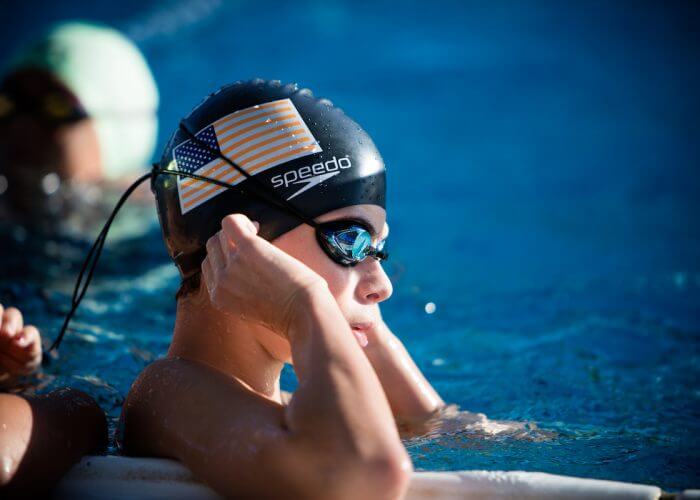‘Tis the Season to Shave – Or Not?

By Olivia Wile, Swimming World College Intern.
For many swimmers, it’s the most wonderful time of the year for two reasons. First, a holiday dedicated to food is right around the corner. And second, a mid-season taper meet is quickly approaching.
For high school to college swimmers alike, a mid-season taper meet usually means it’s time to dust off that technical suit and break out the razors. For many, it’s a time to shave down, suit up and track the progress they’ve made so far this season.
As shaving is a common practice during championship season, have we as swimmers ever stepped back to question the traditional reasoning of why?

Photo Courtesy: lan MacNicol
The History of Shaving
Shaving for competition made its debut by Australian Swimmer Jon Hendricks. The athlete won a series of national titles after supposedly being encouraged by his father to shave down before competing.
Two years later, shaving was sensationalized by the entire Australian swim team in the 1956 Melbourne Olympics. From there, the technique of shaving down before big competitions spread across the world of competitive swimming.
The benefits of this pre-meet ritual, however, have not gone undisputed. There are many different arguments as to whether shaving provides more of a mental or physical edge.

Photo Courtesy: Bob Stanton-USA TODAY Sports
Matter over Mind
Swimmers can agree on one thing: shaving the arms and legs are not the sole reason for a significant time drop in an event. This is actually a good thing, as it accredits hard work for playing a role in the success athletes experience – not a simple shave down.
There is scientific evidence, however, that suggests shaving does impact both the mind and the body. This is primarily due to sensory reasons. The skin has many different sensory receptors that communicate information to the brain and spinal cord. In other words, when a bandage is ripped off the skin, sensory receptors send a signal to the brain that prompts us to feel pain.
When these sensory receptors sense a change in environment – also known as a freshly shaven body – swimmers are subject to a change in muscle output and also motor output. To read more about this process, click here. A change in motor output can thus result in faster swimming.
A popular study conducted by Sharp and Costill explores the distance per stroke, heart rate and blood lactate level of nine male collegiate swimmers while swimming the 400 yard breaststroke. The study found an increase in distance per stroke and decrease in heart rate and lactic acid after the men shaved down. It also measured an increase in maintaining velocity after pushing off the wall while holding a streamline.
As great as this physiological proof seems, the study fails to measure the physiological effects of active drag versus shaving on the body. Active drag is the resistance swimmers face while stroking and kicking.

Photo Courtesy: Matt Rubel of Rubel Photography
Mind over Matter
Since there are some unanswered questions in the physical department, now may be the time to thank the mind for the superpowers of shaving. Many articles, including those published by Active and How Stuff Works, agree that even if shaving doesn’t physically reduce drag, it does provide quite the psychological boost for swimmers. This is primarily due to “feel.”
When swimmers shave, they are removing dead skin cells off the body, revealing a fresh, hypersensitive layer of new skin. As a result, they can experience a heightened level of feeling for the water. This increased level of feeling is good for many things, such as swimming fast.
So yes, go ahead and thank those new skin cells for that euphoric, tingling feeling you get after jumping into the pool for the first time after shaving.
Mind AND Matter
All in all, there are potential physical and mental elements that go into shaving before a big competition. If you’re among the swimmers getting ready for a mid-season taper meet and are permitted by your coach, shave down and have some fun swimming fast!
All research was conducted by the author and does not necessarily reflect the views of Swimming World Magazine nor its staff.



